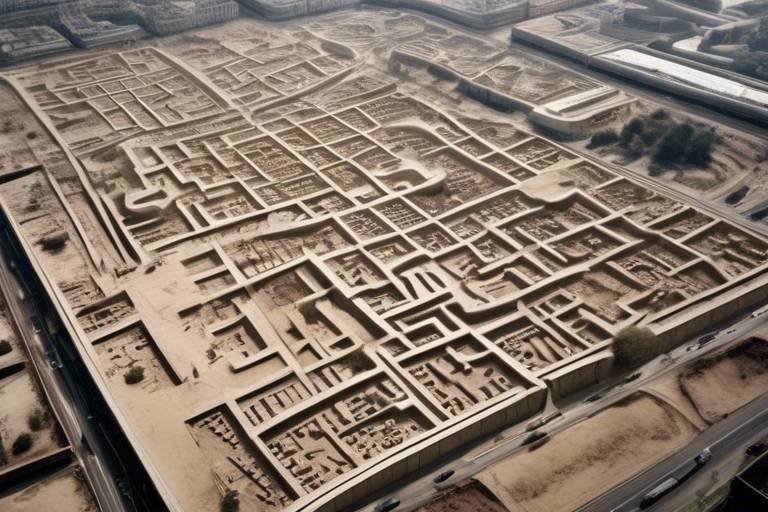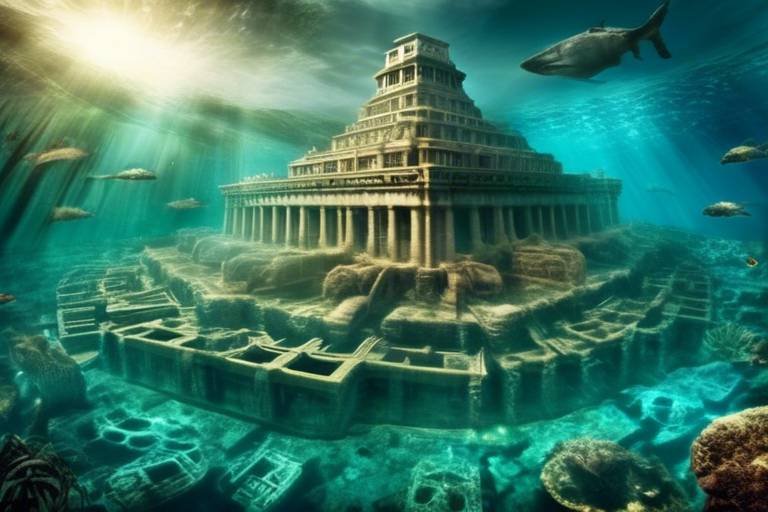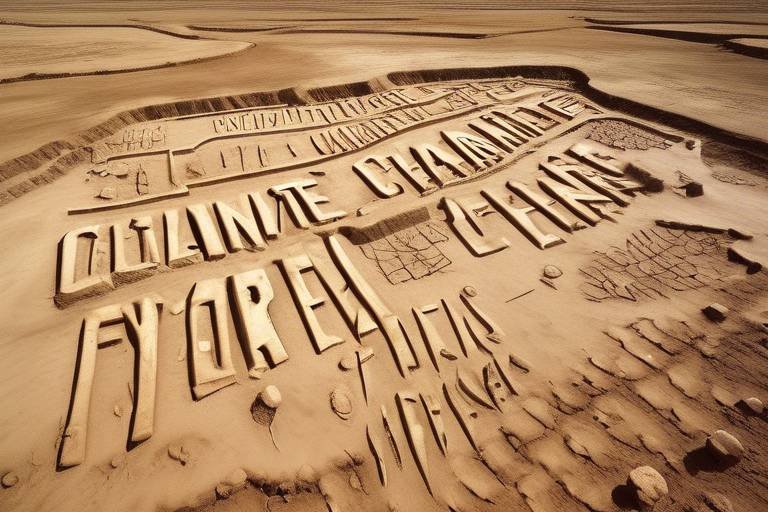Deciphering the Mysteries of the Olmec Civilization
The Olmec civilization, often regarded as the mother culture of Mesoamerica, continues to intrigue historians, archaeologists, and enthusiasts alike with its enigmatic legacy. Delving into the depths of time, the origins of the Olmec civilization remain shrouded in mystery, sparking debates and theories among scholars. From the colossal stone heads that dot the landscape to the intricate art forms that depict their beliefs and practices, the Olmec culture is a tapestry of symbolism waiting to be deciphered.

Origins of the Olmec Civilization
The Olmec civilization, one of the oldest and most enigmatic cultures of ancient Mesoamerica, has fascinated historians, archaeologists, and enthusiasts for centuries. In this article, we will delve into the origins, art, religious practices, architecture, trade, social structure, decline, technological achievements, and modern discoveries of the Olmec civilization, unraveling the mysteries that shroud this remarkable ancient society.
The emergence of the Olmec civilization remains a subject of scholarly debate and speculation. Scholars believe that the Olmec civilization flourished in the lowlands of Mexico's Gulf Coast around 1400 BCE, making them one of the earliest complex societies in Mesoamerica. Some theories suggest that the Olmec people migrated from other regions, while others argue that they were indigenous to the area.
Archaeological evidence, including monumental stone sculptures and ancient settlements like San Lorenzo and La Venta, provides insights into the Olmec's early development. The Olmec's unique artistic style, characterized by colossal stone heads and intricate carvings, showcases their cultural sophistication and artistic prowess.
The Olmec's strategic location along trade routes and their mastery of agriculture and resource management likely contributed to their rise as a prominent civilization in ancient Mesoamerica. Their influence on subsequent cultures, such as the Maya and Aztecs, underscores the significance of the Olmec civilization in shaping the region's history.

Art and Iconography
Art and iconography are integral components of the enigmatic Olmec civilization, offering profound insights into their cultural identity and societal values. The Olmec people were masterful artisans, known for their intricate art forms and symbolic representations that continue to captivate archaeologists and art enthusiasts alike.
The iconic colossal stone heads, carved with meticulous detail, stand as monumental testaments to the artistic prowess of the Olmec civilization. These colossal heads, often weighing several tons, depict distinct individuals with unique facial features, possibly representing revered leaders or deities in Olmec society.
Moreover, the Olmec art is characterized by its use of jade, a precious stone highly valued by the ancient Mesoamerican cultures. Intricately carved jade figurines, masks, and jewelry reflect the Olmec's sophisticated craftsmanship and their reverence for this precious material.
Symbolism played a crucial role in Olmec art, with recurring motifs such as jaguars, serpents, and anthropomorphic figures symbolizing various aspects of their cosmology and belief systems. These symbolic representations not only adorned their artworks but also conveyed deeper meanings related to their religious beliefs and cultural practices.
One of the most intriguing aspects of Olmec iconography is the enigmatic "were-jaguar," a supernatural being depicted with features of both a human and a jaguar. This hybrid creature is believed to have held significant religious symbolism, possibly representing a deity associated with fertility, transformation, or shamanic practices.
The intricate art and iconography of the Olmec civilization provide a window into their rich cultural heritage, offering valuable clues to unraveling the mysteries of this ancient society and its enduring legacy in Mesoamerican history.

Religious Beliefs and Practices
Religious beliefs and practices held a central role in the Olmec civilization, shaping their worldview and influencing every aspect of their lives. The Olmecs worshipped a pantheon of deities, with each deity representing different aspects of nature, fertility, and the supernatural. These beliefs were intricately woven into their daily rituals and ceremonies, reflecting a deep connection to the spiritual realm.
One of the most prominent deities in Olmec religion was the Maize God, symbolizing fertility, growth, and sustenance. The Olmecs believed that through honoring and appeasing these deities, they could ensure the prosperity of their crops, the well-being of their communities, and protection from malevolent forces.
Archaeological evidence suggests that the Olmecs conducted elaborate ceremonies and sacrifices to honor their gods, often involving offerings of food, precious objects, and even human sacrifices. These rituals were performed in sacred spaces such as temples and pyramids, underscoring the significance of religious practices in Olmec society.
The Olmecs also practiced divination and shamanism, seeking guidance from spiritual leaders who could communicate with the spirit world. Shamans played a crucial role in mediating between the human and divine realms, interpreting omens, and performing healing rituals to maintain the balance between the physical and metaphysical realms.
Moreover, the Olmecs believed in the concept of an afterlife, where the souls of the deceased journeyed to the underworld to be reunited with their ancestors and gods. Funerary practices such as burial offerings and tomb structures reflected these beliefs, emphasizing the continuity of life beyond death and the importance of honoring the deceased.
In conclusion, the religious beliefs and practices of the Olmec civilization were deeply ingrained in their cultural identity, shaping their worldview, societal norms, and interactions with the spiritual realm. By delving into the mysteries of Olmec religion, we gain a profound insight into the spiritual legacy of this ancient civilization.

Architectural Marvels
The Olmec civilization, known for its remarkable architectural marvels, left behind a legacy of impressive structures that continue to captivate historians and archaeologists. One of the most iconic features of Olmec architecture is the construction of ceremonial centers, which served as focal points for religious and social activities. These centers, characterized by massive stone platforms and pyramidal structures, reflected the Olmec's advanced knowledge of engineering and urban planning.
Another notable architectural achievement of the Olmec people is the creation of colossal stone heads, carved from basalt boulders weighing several tons. These monumental sculptures, depicting stylized human faces with distinct features, are believed to represent powerful rulers or deities within the Olmec society. The intricate craftsmanship and sheer size of these stone heads showcase the artistic and technical expertise of the Olmec civilization.
In addition to ceremonial centers and stone monuments, the Olmec also constructed complex drainage systems and aqueducts to manage water resources in their urban centers. These engineering feats demonstrate the Olmec's ingenuity in harnessing natural elements for practical purposes, such as irrigation and sanitation.
Furthermore, the layout of Olmec cities, characterized by carefully planned streets and plazas, reflects a sophisticated understanding of urban design and spatial organization. The strategic positioning of public buildings and residential areas within these cities highlights the Olmec's emphasis on community living and communal spaces for social gatherings and ceremonies.
Overall, the architectural marvels of the Olmec civilization not only showcase their technical prowess and artistic creativity but also provide valuable insights into their cultural values, societal organization, and religious beliefs. Through the study of these ancient structures, researchers continue to unravel the mysteries surrounding the Olmec people and their enduring influence on subsequent Mesoamerican civilizations.

Trade and Economy
Trade and economy were integral aspects of the Olmec civilization, shaping their interactions with neighboring societies and influencing their internal dynamics. The Olmecs engaged in a sophisticated network of trade, exchanging goods such as jade, obsidian, cacao, and pottery with distant regions. This trade not only facilitated the flow of commodities but also fostered cultural exchange and diplomatic relations.
One of the key trade routes of the Olmecs was the exchange of marine resources along the Gulf Coast, where they harvested valuable items like shells and fish. This maritime trade not only provided the Olmecs with essential resources but also connected them to coastal communities, expanding their economic influence beyond their immediate surroundings.
Moreover, the Olmec economy was supported by agricultural practices that yielded surplus crops, enabling the development of specialized craft production and long-distance trade. The cultivation of maize, squash, beans, and other crops formed the foundation of Olmec agriculture, sustaining their population and fueling economic activities.
The Olmecs' economic prosperity was further bolstered by their control over important resources like rubber and basalt, which were utilized in various industries and traded with neighboring societies. This strategic control over key resources not only contributed to the wealth of the Olmec elite but also solidified their economic dominance in the region.
Additionally, the Olmec economy was characterized by a system of tribute and redistribution, where surplus goods were collected from different regions and redistributed among the population. This centralized economic structure not only ensured social stability but also reinforced the authority of the ruling class, maintaining the hierarchical order within Olmec society.

Social Structure and Governance
When delving into the intricate tapestry of the Olmec civilization, one cannot overlook the fascinating aspects of their social structure and governance. At the heart of Olmec society lay a hierarchical system that defined the roles and responsibilities of individuals within the community. The Olmecs structured their society in a way that highlighted the importance of leadership and organization, showcasing a sophisticated level of governance for their time.
At the upper echelons of Olmec society stood the ruling elite, who wielded power and authority over the populace. These individuals were likely religious and political leaders who oversaw important ceremonies, made crucial decisions, and maintained order within the community. Their influence extended beyond mere governance, shaping the spiritual and cultural landscape of Olmec life.
Beneath the ruling class existed a tiered social structure that encompassed various strata of society. Artisans, farmers, laborers, and craftsmen formed the backbone of Olmec civilization, contributing to the economy and cultural development of their society. Each segment played a vital role in sustaining the intricate web of Olmec life, showcasing a harmonious blend of specialization and cooperation.
Moreover, the Olmec society displayed a remarkable level of organization and cohesion, evident in the construction of ceremonial centers and monumental architecture. These impressive feats required meticulous planning, resource allocation, and labor coordination, reflecting a centralized authority that oversaw large-scale projects with precision and efficiency.
Within this structured framework, societal norms and customs governed interactions between individuals, fostering a sense of community and shared identity among the Olmec people. Respect for authority, adherence to rituals, and mutual cooperation were pillars of Olmec society, reinforcing the importance of social harmony and collective well-being.
As we unravel the mysteries of Olmec social structure and governance, we gain a deeper appreciation for the complexities of this ancient civilization. The intricate web of relationships, the balance of power, and the mechanisms of control all paint a vivid picture of a society that thrived on order, hierarchy, and cooperation. The legacy of Olmec governance continues to intrigue and inspire us, offering valuable insights into the dynamics of leadership and organization in the ancient world.

Decline and Legacy
As we delve into the intriguing history of the Olmec civilization, we are inevitably drawn to the enigmatic period of its decline and the lasting legacy it left behind. The decline of the Olmec civilization, once a dominant force in ancient Mesoamerica, remains shrouded in mystery, with scholars offering various theories to explain its downfall. Some suggest environmental factors such as volcanic eruptions or climate change, while others point to social unrest or external invasions as possible causes.
Despite the uncertainties surrounding their decline, the legacy of the Olmec civilization continues to reverberate through the annals of history. Their influence on subsequent Mesoamerican cultures, such as the Maya and Aztec, is undeniable, with echoes of their art, religion, and architectural achievements resonating through the centuries. The colossal stone heads, intricate jade artifacts, and monumental pyramids stand as a testament to the ingenuity and creativity of the Olmec people.
Moreover, the Olmec legacy extends beyond the physical remnants of their civilization. Their technological advancements in agriculture, including the cultivation of maize, and innovations in pottery and stone carving techniques laid the foundation for future developments in Mesoamerican societies. The Olmec's sophisticated understanding of trade networks and economic activities also left a lasting impact on the region, shaping the economic landscape of ancient Mesoamerica.
As modern archaeologists continue to uncover new discoveries and conduct research into the mysteries of the Olmec civilization, the legacy of these ancient peoples only grows more profound. The enigmatic allure of the Olmec culture, with its intricate symbolism and spiritual beliefs, continues to captivate scholars and enthusiasts alike, inspiring a deeper appreciation for the rich tapestry of Mesoamerican history.

Technological Advancements
The Olmec civilization, known for its remarkable advancements in various technological fields, left a lasting impact on ancient Mesoamerican societies. One of the key technological achievements of the Olmec people was their innovative agricultural practices. They developed sophisticated irrigation systems that allowed them to cultivate crops such as maize, beans, and squash on a large scale. This technological advancement not only ensured food security for the Olmec population but also enabled surplus production for trade and commerce.
In addition to agriculture, the Olmec excelled in the art of pottery making. They mastered the techniques of shaping clay into intricate vessels and figurines, often adorned with elaborate designs and symbolic motifs. These pottery pieces not only served practical purposes but also held significant cultural and religious symbolism for the Olmec people. The advancements in pottery technology reflected the artistic prowess and craftsmanship of the Olmec civilization.
Furthermore, the Olmec people demonstrated remarkable skill in the creation of jade artifacts. Jade, a precious stone highly valued by Mesoamerican cultures, was meticulously carved by Olmec artisans to produce exquisite ornaments, masks, and figurines. The intricate detailing and precision in jade carving showcased the technical expertise and artistic sensibilities of the Olmec craftsmen, highlighting their mastery in working with precious materials.
Moreover, the Olmec's knowledge of metallurgy allowed them to produce tools and ornaments from materials such as copper and gold. The development of metalworking techniques enabled the Olmec to create objects of utility and adornment, showcasing their proficiency in manipulating metals for various purposes. These technological advancements in metallurgy not only enhanced the material culture of the Olmec civilization but also contributed to their economic prosperity through trade and exchange of metal goods.
Overall, the technological advancements of the Olmec civilization were integral to their societal development and cultural identity. From agricultural innovations to artistic creations and metallurgical achievements, the Olmec's mastery of various technologies exemplified their ingenuity and resourcefulness in harnessing the natural resources of their environment. These advancements not only shaped the material culture of the Olmec society but also laid the foundation for technological progress in subsequent Mesoamerican civilizations.

Modern Discoveries and Research
Modern Discoveries and Research into the enigmatic Olmec civilization continue to captivate archaeologists and historians alike. Recent excavations have unearthed new insights into the daily lives, cultural practices, and technological prowess of the Olmec people. One fascinating discovery is the intricate network of trade routes that connected distant regions, highlighting the economic sophistication of this ancient civilization.
Moreover, ongoing research has revealed the significance of jade in Olmec society, shedding light on the spiritual and symbolic importance of this precious stone. The meticulous craftsmanship displayed in Olmec artifacts, such as jade figurines and ceremonial objects, showcases the artistic mastery of these ancient artisans.
Additionally, advancements in scientific techniques have enabled researchers to analyze ancient DNA samples, providing valuable information about the genetic diversity and migration patterns of the Olmec population. By studying genetic markers, scientists aim to unravel the complex social dynamics and interactions that shaped Olmec society.
Furthermore, the discovery of elaborate burial sites and ritual offerings has deepened our understanding of Olmec funerary practices and religious beliefs. Intriguingly, the presence of elaborate tombs and sacrificial offerings underscores the spiritual significance of death and the afterlife in Olmec cosmology.
Excitingly, recent excavations at key archaeological sites have unearthed new monumental structures and artifacts, offering fresh perspectives on the architectural achievements and cultural innovations of the Olmec civilization. The enigmatic colossal stone heads, with their distinctive features and mysterious symbolism, continue to puzzle researchers and spark debates about their purpose and significance.
In conclusion, the ongoing exploration of modern discoveries and research surrounding the Olmec civilization serves as a testament to the enduring legacy of this ancient culture. As scholars continue to unravel the mysteries of the Olmec people, each new finding brings us closer to comprehending the rich tapestry of their history and the profound impact they had on Mesoamerican civilizations that followed.
Frequently Asked Questions
- What is the significance of the Olmec civilization?
The Olmec civilization is considered one of the earliest complex societies in Mesoamerica, laying the foundation for future cultures in the region. Their art, architecture, and religious practices had a profound influence on subsequent civilizations.
- How did the Olmec people create their iconic colossal stone heads?
The exact methods used by the Olmec to carve the massive stone heads remain a mystery. Scholars speculate that they may have used stone tools and a combination of techniques involving abrasives and polishing to achieve the intricate details.
- What caused the decline of the Olmec civilization?
The factors contributing to the decline of the Olmec civilization are still debated among archaeologists. Possible reasons include environmental changes, social unrest, and shifts in trade routes that led to the abandonment of major Olmec centers.
- What makes Olmec art and iconography unique?
Olmec art is characterized by its realistic portrayals of human figures, especially the distinct features seen in the colossal heads. The symbolic representations of jaguars, serpents, and other animals in their art reflect their deep connection to nature and spirituality.
- Are there any ongoing excavations or research projects focused on the Olmec civilization?
Yes, archaeologists continue to uncover new insights into the Olmec civilization through excavations at sites like San Lorenzo and La Venta. Recent discoveries of elite burials, monuments, and ancient tombs contribute to our understanding of this enigmatic culture.



















